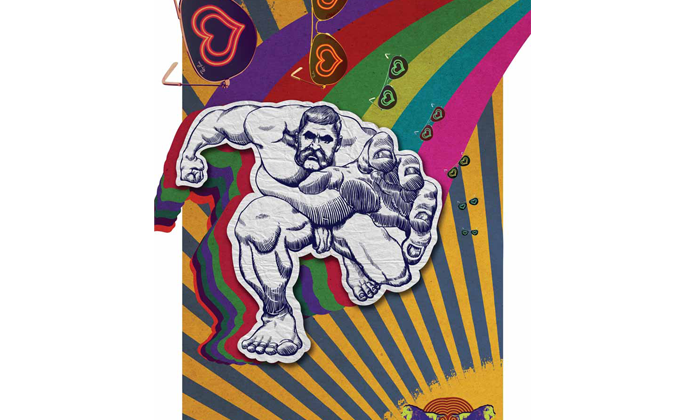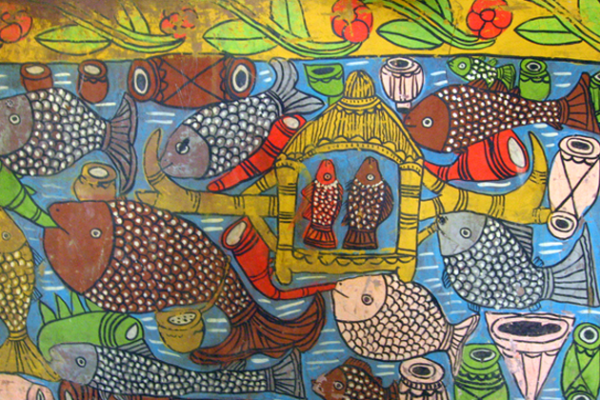“There are two kinds of people in this world: those who have seen ‘Gunda’, and those who shall see it.”
Such overly-dramatic statements are befitting of ‘Gunda’, one of Bollywood’s oddest, most hyperbolic films. Released in 1998, ‘Gunda’ – the epitome of a B-grade movie – did surprisingly well at the box office, bringing in more than three crore rupees. But ‘Gunda’ gained its real popularity (infamy?) years later, when, through the vagaries of pop culture taste-making, the movie gained a devoted cult following. The movie became revered for its extravagant ridiculousness: its dialogue in rhyming couplets; its notso- subtle sexual innuendos; its comically exaggerated violence; its glaring inconsistencies and continuity errors; and its aggressively low production value. It became, in short, a prime example of the camp aesthetic in India.
Last month, I mused about YouTube hero Wilbur Sargunaraj, and his ambivalent relationship with camp, the distinctly modern aesthetic that embraces the motto “so bad it’s good.” But Wilbur was aware of his own badness; indeed, the badness was part of his humble-guy façade, which undercut its hilarity. At the risk of repeating myself, I’ll again quote cultural critic Susan Sontag, who wrote the seminar essay “Notes on ‘Camp.’” She remarked, “One must distinguish between naïve and deliberate Camp. Pure Camp is always naïve. Camp which knows itself to be Camp (‘camping’) is usually less satisfying.” Wilbur is camping, but ‘Gunda’ is naïve camp. (Unless the film’s director, Kanti Shah, is playing an elaborate joke on all of us.)
Sontag’s essay provides further insight into ‘Gunda’s camp appeal. She gets right to the heart of it, saying, “The hallmark of Camp is the spirit of extravagance.” ‘Gunda’ is nothing if not extravagant, as can be seen by its plot summary on Wikipedia. The summary itself, clearly a labour of love by a devoted fan, is a masterpiece of wry understatement, matter-of-factly pointing out the film’s absurdities. (For example, “He manages to defeat Bulla’s prize fighter by simply twisting his hand for a few seconds.” And: “Kale arrives with a contingent of about twenty white cars, none of which have drivers. Shankar is then ambushed by several Kung-fu trained goons with knives, submachine guns and grenades.”) Sontag insists that camp must have “the proper mixture of the exaggerated, the fantastic, the passionate, and the naïve”; this, in fact, sounds like the perfect description of ‘Gunda’.
Sontag goes even deeper, describing not only the superficial features of camp, but also its historical pedigree and its place in the cultural landscape. She identifies camp as the modern equivalent of dandyism, in that both elevate aesthetics and artifice over “serious” concerns like ethics and morality. But while dandies revered fancy clothes and refi ned language, camp enthusiasts embrace pop culture. As Sontag notes, camp revels “not in Latin poetry and rare wines and velvet jackets, but in the coarsest, commonest pleasures, in the arts of the masses.”
Even though camp embraces mass media, it is – in Sontag’s view – reserved for an elite set of tastemakers. Dandyism emerged as old aristocratic orders were falling in Europe; the chief proponents of Dandyism came from the rising middle classes, which were establishing themselves as the new cultural elites. Similarly, camp enthusiasts come from a place of privilege that allows for detachment and ironic appreciation. Once again, Sontag: “The relation between boredom and Camp taste cannot be overestimated. Camp taste is by its nature possible only in affl uent societies, in societies or circles capable of experiencing the psychopathology of affluence.” In the United States, Sontag traces the origins and popularization of camp to the queer community, which she sees as a cultural vanguard. In India, though, camp has emerged chiefly on college campuses. Indeed, ‘Gunda’ is known for its popularity among IIT students. While India may not be an affluent society, and many college students even struggle financially, elite institutions like IIT off er the right combination of boredom, money and cultural capital, allowing the camp aesthetic to take root.
In India, “the psychopathology of affluence” can be tied to the postliberalisation era, during which – after decades of austere values – consumerism has become cool. Seen through this lens, ‘Gunda’s plot is a throwback to the preliberalisation era, when working-class heroes were much more common. In ‘Gunda’, the prolific Mithun Chakraborty stars as a coolie named Shankar, who works at the airport (or perhaps the shipyard, or\ both). Shankar, a man of the masses, gets revenge on the wealthy, corrupt villains that have murdered his sister and father. He kills, with creativity and aplomb, a welldressed playboy, a big-shot politician, a corpulent police inspector, a pimp, a rapist, a wealthy criminal mastermind (among others). Back in the 1970s and 1980s, such heroes were common in mainstream movies (although their killing sprees were less egregious). Amitabh Bachchan also played a noble luggage-carrier in the 1983 film ‘Coolie’. And not just a coolie, but the organiser of a labour strike; no wonder the film was accused of having Communist sympathies! By 1998, though, with liberalisation in full swing, a coolie hero could only be relegated to B-grade movies. In 1998, the top-grossing movie was ‘Kuch Kuch Hota Hai’, a celebration of a younger, more consumerist generation. The number three movie of the year was ‘Pyaar To Hona Hi Tha’, a remake of Hollywood’s ‘French Kiss’; following the original, it was set in a glamorous Paris. Fighting moneyed interests was out; becoming moneyed was in.
In today’s Bollywood, one can still find some honest, violent men fighting the corrupt powers-that-be by any means necessary. However, such characters are usually invoked with a wink, and given intentionally kitsch qualities. Witness the massive success of ‘Dabangg’, with its retro look and its gleeful invocation of old Bollywood clichés. But, in Sontag’s terminology, ‘Dabangg’ – like Wilbur Sargunaraj – is just playing at camp; it is not the sublimely pure camp of ‘Gunda’. She says, “In naïve, or pure, Camp, the essential element is seriousness, a seriousness that fails.” ‘Dabangg’ is in on its own joke, so it can’t take itself so seriously. ‘Gunda’, though, will remain a seriously glorious failure.














